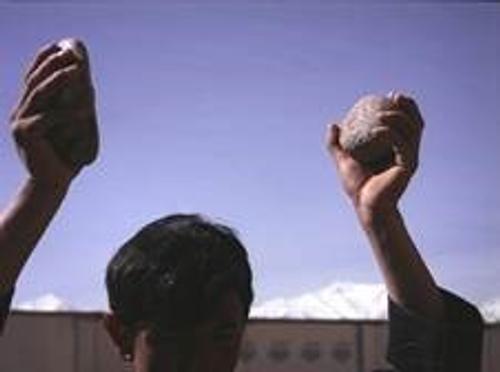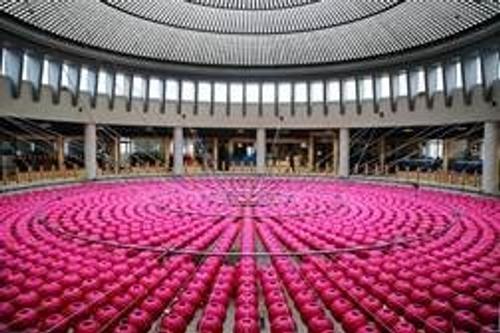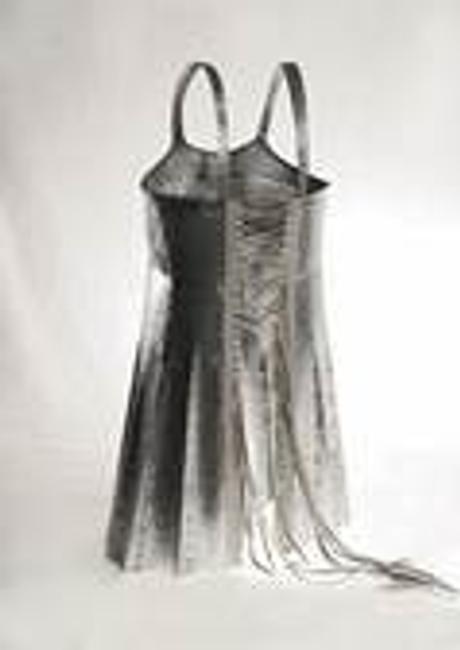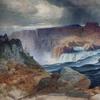'Clapping with Stones: Art and Acts of Resistance' Debuts This August at NYC's Rubin Museum
- NEW YORK, New York
- /
- March 27, 2019


This summer, the Rubin Museum presents the third exhibition in its “Year of Power” programming: “Clapping with Stones: Art and Acts of Resistance,” organized by guest curator Sara Raza and on view on the Rubin’s sixth floor from August 16, 2019, through January 6, 2020.
A powerful meditation on non-conformity and resistance, the exhibition examines social, cultural and political events through a local and global lens, offering unique perspectives from 10 contemporary artists living and working in the United States and internationally — all of whom are grouped together for the first time in a museum setting.
Featuring works in a range of sizes and media — including photography, sculpture, video, textile, and installation — “Clapping with Stones” uses the Rubin’s historic circular architectural details to create an immersive site-specific display.
“Clapping with Stones” features works from Lida Abdul; Kader Attia; Nadia Kaabi-Linke; Naiza Khan; Kimsooja; Pallavi Paul; Shahpour Pouyan; Ibrahim Quraishi; Nari Ward; and Hank Willis Thomas, including:
- “Clapping with Stones” (2005), a film by Lida Abdul, is set on the site where the 6th-century Buddhas of Bamiyan once stood in Central Afghanistan; the Taliban destroyed the statues in 2001. The work depicts a group of men dressed in black and engaged in a ritualistic performance of clapping stones: an act of mourning against the destruction of the Buddhas.
- “Héroes Heridos” (Wounded Heroes) (2018), a video by Kader Attia, is composed of a series of interviews with immigrant activists. The film poetically raises the daily plight of immigrants and their efforts to improve their conditions. The testimonies highlight the deep-seated issues of racism and bias that are rooted in colonialism.
- Berlin-based Nadia Kaabi-Linke’s monumental “Altarpiece” (2015) is a three-panel, gold-leaf encased triptych inspired by an actual Christian altarpiece. Its wax and ink prints bear the scars of a Berlin bunker ravaged by bullets in World War II. The work functions as a marker for history, faith, and the confessional.
- Kimsooja’s “Lotus: Zone of Zero” (2003-present) is a site-specific installation consisting of lotus lanterns suspended from the Museum’s oculus above the spiral staircase. The work is accompanied by a sound component that fuses Tibetan, Gregorian, and Islamic chants.
- A new sculptural installation by Nari Ward features found period furniture, books, and other materials repurposed to create a dynamic display that explores the Black Atlantic — the triangular relationship between Africa, Europe, and the United States — and confronts America’s complex relationship with race.
“The exhibition touches upon myriad artistic practices that explore non-conformity through a dynamic and non-didactic lens to create an inquiry into the manifestation of power that resides in art and society,” says Sara Raza, the former Guggenheim UBS MAP Curator, Middle East and North Africa, who was invited by the Rubin in fall 2018 to organize this exhibition. “‘Clapping with Stones: Art and Acts of Resistance’ follows the artists’ leads and articulates a wide variety of societal and political themes, unveiling power that exists in the unseen, hidden, and unrecorded. Through the work of these artists, the exhibition serves as an open-ended call to action.” She adds, “Staging this exhibition at the Rubin Museum of Art creates a rare confluence of converging global ideas that are rooted in Eastern, Western, and diasporic philosophies and thinking.”

A vibrant parallel to the exhibition is a series of programs The Power of Non-Conformity. The series kicks off with a benefit evening on September 24 followed by an onstage experience with former dominatrix and Taoist nun Kasia Urbaniak, and programs include performances, talks, study days in partnership with local colleges, and school and family tours through the end of the year.
Participating Artists
Lida Abdul (b. 1973, Kabul, Afghanistan; lives and works in Kabul and Los Angeles)
Kader Attia (b. 1970, Paris, France; lives and works in Berlin)
Nadia Kaabi-Linke (b.1978, Tunis, Tunisa; lives and works in Berlin)
Naiza Khan (b. 1968, Bahawalpur, Pakistan; lives and works in London and Karachi)
Kimsooja (b. 1957, Daegu, South Korea; lives and works in New York and Seoul)
Pallavi Paul (b.1986, New Delhi, India; lives and works in New Delhi)
Shahpour Pouyan (b. 1979, Isfahan, Iran; lives and works in New York)
Ibrahim Quraishi (b. 1973, Nairobi, Kenya; lives and works in Amsterdam and Berlin)
Nari Ward (b. 1963, St. Andrew, Jamaica; lives and works in New York)
Hank Willis Thomas (b. 1976, Plainfield, New Jersey; lives and works in New York)
The Rubin Museum of Art is an arts and cultural hub in New York City’s vibrant Chelsea neighborhood that inspires visitors to make connections between contemporary life and the art and ideas of the Himalayas and neighboring regions. www.RubinMuseum.org















_(17100x100_c.jpg)
